|
|
|
|
|
|
|
|
|
|
|
|
|
|
|
|
|
|
|

|
Current Exhibitions Future Exhibitions Back to Exhibitions 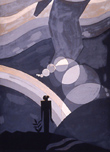  Chapultepec Castle, c. 1860, by Robert Scott Duncanson, oil on canvas, 24 x 31 inches 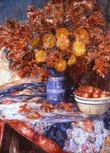 Still Life with Chrysanthemums, 1938, by Palmer Hayden, oil on canvas, 30 x 24 inches 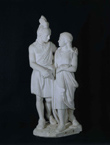 The Marriage of Hiawatha, c. 1968, by Mary Edmonia Lewis, white marble, 29 x 11 1/2 x 12 inches 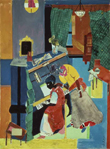 The Piano Lesson, 1983, by Romare Bearden, collage on board, 29 x 22 inches 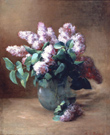 Lilacs, c. 1890, by Charles Ethan Porter, oil on canvas, 22 x 18 inches 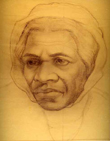 Sojouner Truth, 1940, by Charles White, pencil on paper, 14 x 14 1/2 inches |
The Walter O. Evans Collection of African American Art February 6–April 27, 2003  Florida, 1890, by Henry Ossawa Tanner, oil on canvas, 18 1/2 x 22 1/2 inches The Walter O. Evans Collection of African American Art, which opened at the Museum on February 6, offered Tyler a rare opportunity to view what many consider to be one of the most comprehensive and important private collections of African American art. Noted for its depth and historic range, the collection represents 150 years of African American artistic tradition. Walter O. Evans, a Detroit surgeon who is now retired and living in Savannah, Georgia, assembled the impressive collection and is making it available to the public in this special touring exhibition. Dr. Evans began seriously collecting in the late 1970s with his purchases of a work by Romare Bearden and a print portfolio by Jacob Lawrence. In addition to art, Dr. Evans has been collecting rare books and literature pertaining to the African American experience. The earliest works in this exhibition were paintings and sculpture created in the period following the Civil War by such artists as Mary Edmonia Lewis, Edward Michael Bannister, Henry Ossawa Tanner and Robert Duncanson. Many of the artists, such as Charles Ethan Porter who studied at the National Academy of Design in New York, received a traditional academic education in the arts and then traveled to Europe. There they participated in exhibitions and, learning about current trends in landscape painting, studied old and new Masters such as Michelangelo, Leonardo da Vinci, Narcisse-Virgile Diaz de La Peña, Camille Corot and J.M.W. Turner. Others were followers of the Hudson River School of landscape painting. Mary Edmonia Lewis, whose works in the exhibition include her neoclassical carved marble sculptures, The Wooing of Hiawatha, 1866, and the Marriage of Hiawatha, c. 1868, studied at Oberlin College, learned sculpture in Boston and then worked in Rome, Italy in the 1860s. Henry Wadsworth Longfellow's poem The Song of Hiawatha held a personal meaning for Lewis whose mother was Chippewa—as was Hiawatha. After working in Europe, several of these artists returned to the United States to make a living (some more successful than others) with their art, finding inspiration in the landscape and people of America. Later works in the exhibition were drawn from the Harlem Renaissance of the 1920s and early 1930s, a time when black writers, performers, musicians, poets and artists in the Harlem neighborhood of New York City began to receive serious attention from critics, publishers and the rest of the nation. In this exhibition, artists associated with this era included Richmond Barthé, Eldzier Cortor, Aaron Douglas, William Harper and Charles White. Douglas' work, The Negro Speaks of Rivers (for Langston Hughes), 1941, illustrated this famous poem by Hughes written in 1921. Two sensitive and beautiful portraits of Sojourner Truth and Frederick Douglas by Charles White, created in 1940, reflected the awareness and preservation of the history of slavery in America, which was being documented by so many artists of this period. The most recent works in the collection spanned the years from 1944–1997 and showcased such important artists as Romare Bearden, Richard Hunt, Jacob Lawrence and the photographer James VanDerzee. Bearden's bright and animated collage works are well known to the American public. He captures the liveliness and spirit of music in such works as Jazz Rhapsody (1982) and The Piano Lesson (1983). Elizabeth Catlett, who studied with Grant Wood, was represented in the exhibition with sculptures that celebrate the beauty of the female form. Self-taught artists such as Clementine Hunter and Horace Pippin are intriguing in their naïve depictions of everyday scenes: landscapes, images of people at work and religious scenes. The contrast these works made in relation to contemporaries such as the sculptor Richard Hunt—with his abstract constructions of welded steel and bronze—provide a meaningful range of works that reflected the African American experience of preserving and recording events, which is a part of the rich American culture heritage. Sponsors for this exhibition included June and Steve Hillis and CompUSA of Tyler. |